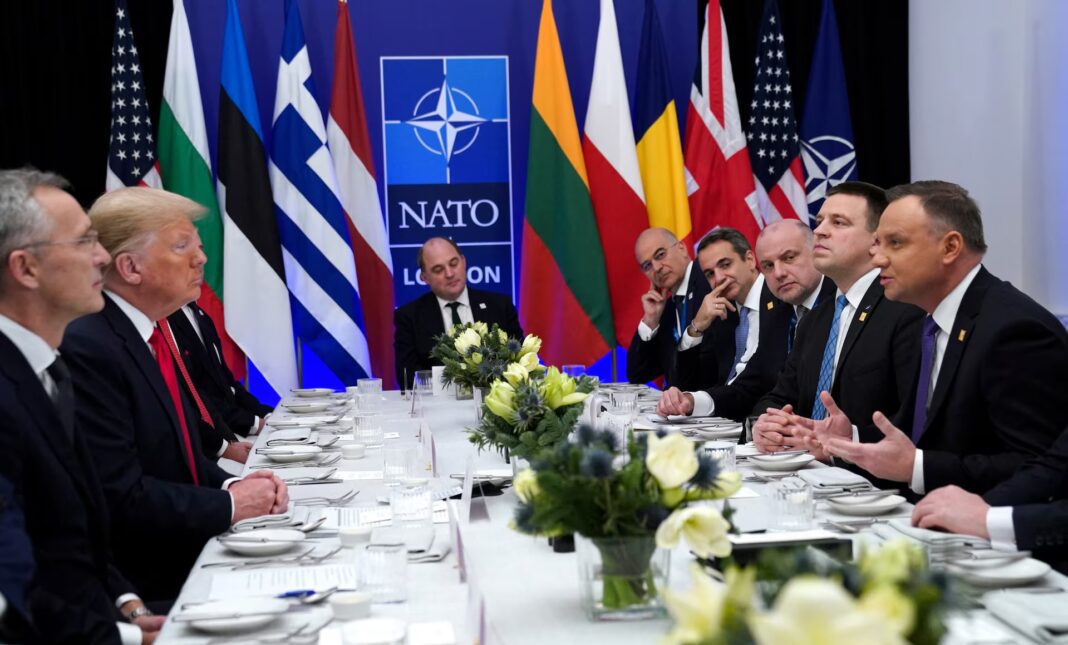Introduction to the Controversy
NATO members are grappling with a proposal from U.S. President-elect Donald Trump to significantly increase defense spending. Trump’s call for NATO allies to allocate 5% of their GDP to defense has stirred a heated discussion. This suggestion, which exceeds the alliance’s current 2% target, has raised questions about feasibility and the future of global security.
Trump’s Bold Proposal Sparks Global Attention
During a press conference, Trump argued that NATO allies should contribute more to their defense budgets, suggesting a 5% GDP allocation. This figure is more than double the current target and far above what most NATO members spend. Even the United States, which contributes the most, spends only 3.38% of its GDP on defense. Trump’s proposal reflects his previous criticism of NATO allies for underfunding their militaries, leaving the U.S. to shoulder much of the burden.
Current Spending and New Targets
Currently, NATO’s 32 members collectively spend $1.474 trillion on defense. The United States accounts for the largest share, with $968 billion, while European nations and Canada contribute $507 billion. However, only a few countries, like Poland and Estonia, exceed the 2% goal.
Many experts believe the alliance might compromise on a 3% target. This would still require substantial increases from most countries, some of which struggle to meet even the current goal. Italy, for example, spends only 1.5% of its GDP on defense, highlighting the challenge for less-wealthy nations.
Challenges in Raising Defense Budgets
Increasing defense budgets is a complex task. Governments face tight public finances, economic uncertainty, and limited political support for military spending. Even with the urgency created by Russia’s war in Ukraine, achieving a 3% target would take years. Analysts estimate that maintaining Europe’s current defense growth rate of 10% annually could take a decade to meet the proposed target.
European Self-Reliance Gains Momentum
European countries are seeking ways to reduce dependence on the United States. France and the Baltic states are advocating for joint European Union funding for defense. This initiative could finance critical military capabilities like air-to-air refueling and advanced electronic warfare systems. However, these investments require billions of dollars and significant political will.
Germany’s upcoming election will play a crucial role in determining the future of EU defense funding. If successful, such measures could help Europe achieve greater autonomy in defense and align with NATO’s broader goals.
The Impact of Russia’s Aggression
Russia’s invasion of Ukraine has been a wake-up call for NATO allies. Many European countries have already increased their defense budgets, spurred by fears of further Russian aggression. Poland, bordering Ukraine, leads NATO in defense spending at 4.12% of its GDP. However, sustaining such levels across the alliance is a formidable challenge.
Trump’s demand for increased spending aligns with the heightened threat environment. NATO allies recognise the need to bolster their defences, but the scale of the proposed increase raises concerns about affordability and practicality.
Balancing Defense and Diplomacy
While Trump’s proposal has reignited debates on military spending, some leaders caution against focusing solely on an arbitrary figure. They emphasize the importance of investing strategically to address modern threats. This includes cyber defense, intelligence sharing, and advanced military technologies.
NATO’s response to Trump’s proposal will likely involve months of negotiations. Analysts predict the alliance will agree on a more modest target, possibly around 3%. This figure would represent a significant increase while remaining within the realm of possibility for most members.
Looking Ahead to the NATO Summit
The upcoming NATO summit in The Hague will be a pivotal moment for the alliance. Leaders must strike a balance between meeting security demands and addressing economic constraints. The summit’s outcome will not only define NATO’s future spending goals but also signal the alliance’s unity in the face of global challenges.
As NATO navigates this debate, its members remain committed to strengthening their collective defence. The alliance’s decisions will shape the global security landscape and reaffirm its role as a cornerstone of international peace and stability.

